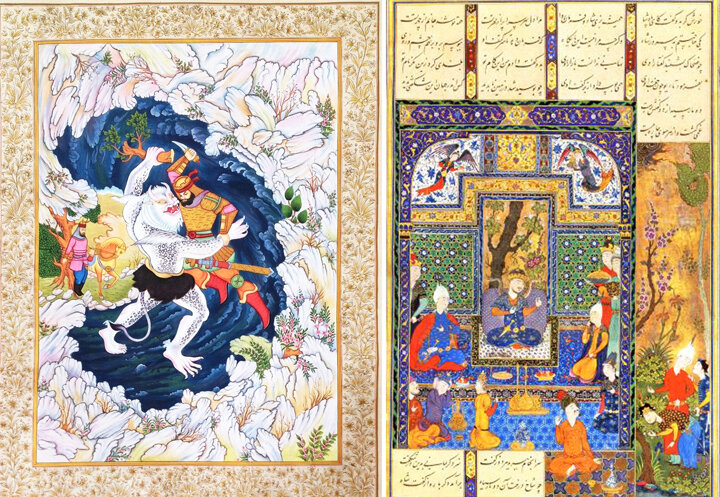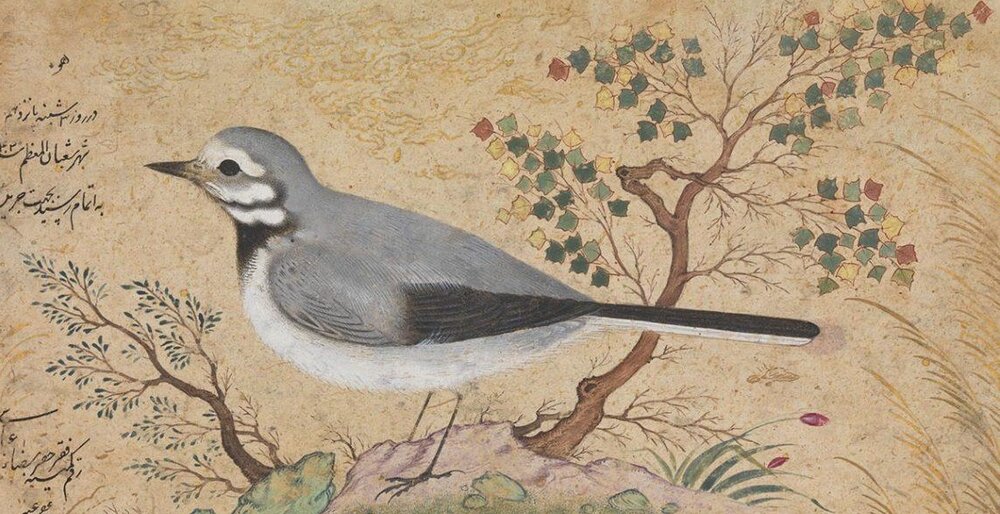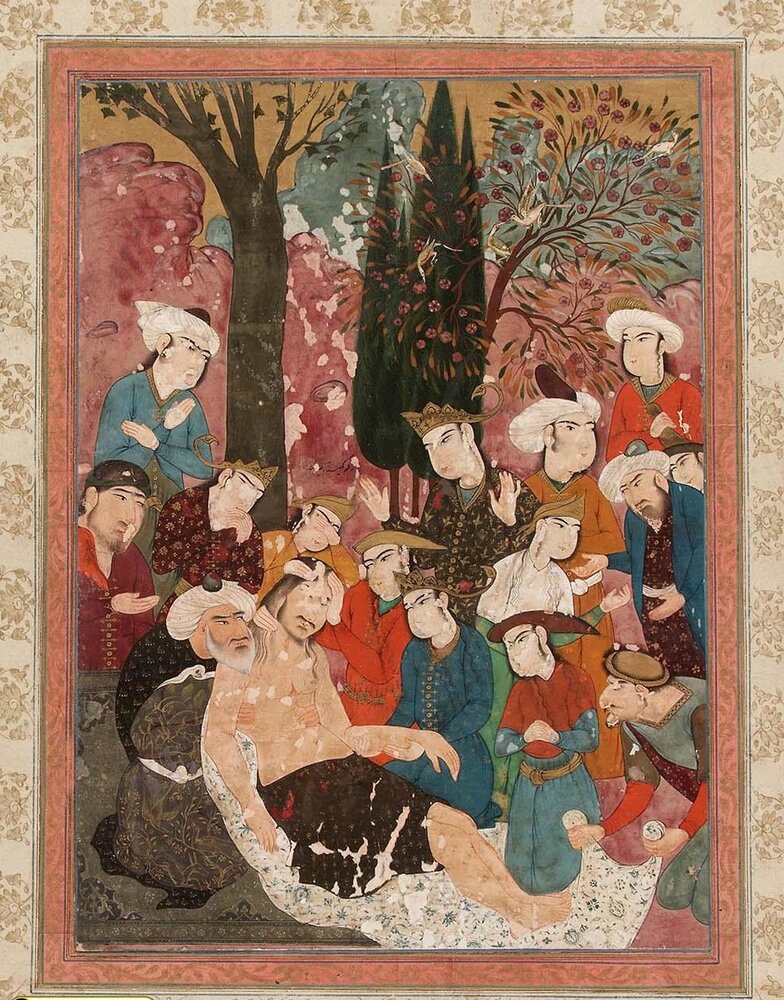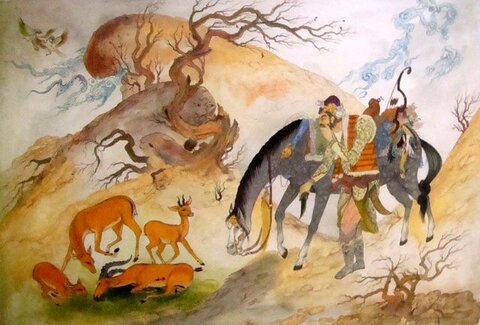Iran (IMNA) - The Eṣfahān school’s leading master was Rezā ʿAbbāsī, who was greatly influenced by the Kazvin school of portraiture, particularly the work of Ṣādiqī Beg (flourished late 16th century).

Rezā ʿAbbāsī preferred naturalistic subjects and portraiture to the illustrative themes that had dominated Persian miniature painting for 200 years. His painting Two Lovers (Metropolitan Museum of Art, New York City) is among the most accomplished works of the Eṣfahān school. Although there is an element of stylization, the exquisiteness and delicacy of the hands, faces, and costumes infuse the painting with an impressionistic quality.

The curved, plumpish figures are highly effeminate, in the tradition of the late Ṣafavid court. Rezā ʿAbbāsī was also a master of line drawing, a form of art not popular in the Islamic world before the end of the 16th century.
Painters of the Eṣfahān school imitated Rezā ʿAbbāsī’s style, and, although they never equaled the master, they produced much delightful work through the beginning of the 18th century. Among Rezā ʿAbbāsī’s best pupils were his son Moḥammad Shafīʿ and Moʿīn Moṣavver.

The Eṣfahān school lost its freshness after the master’s death, and miniature painting in Iran declined.
Britannica


Your Comment